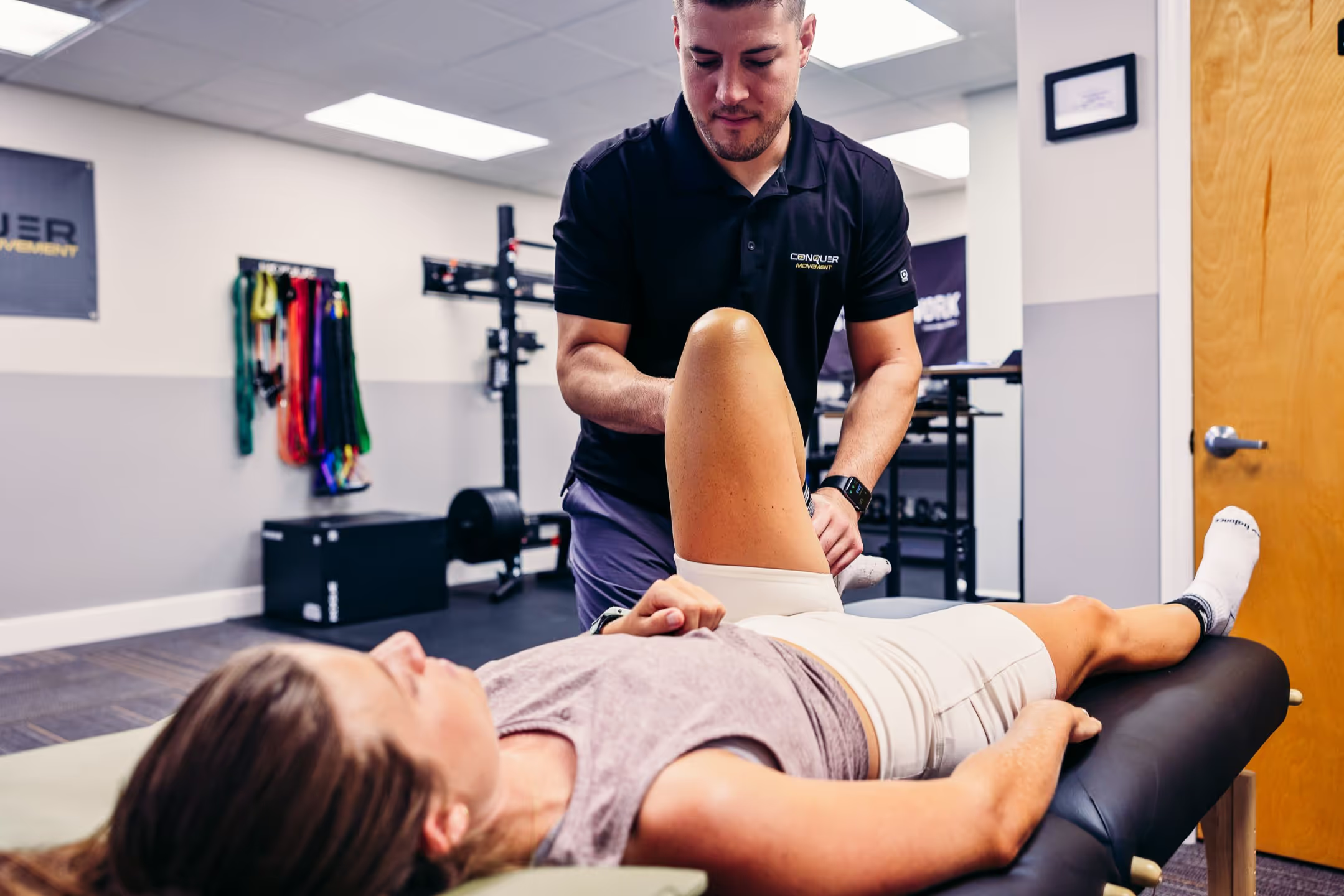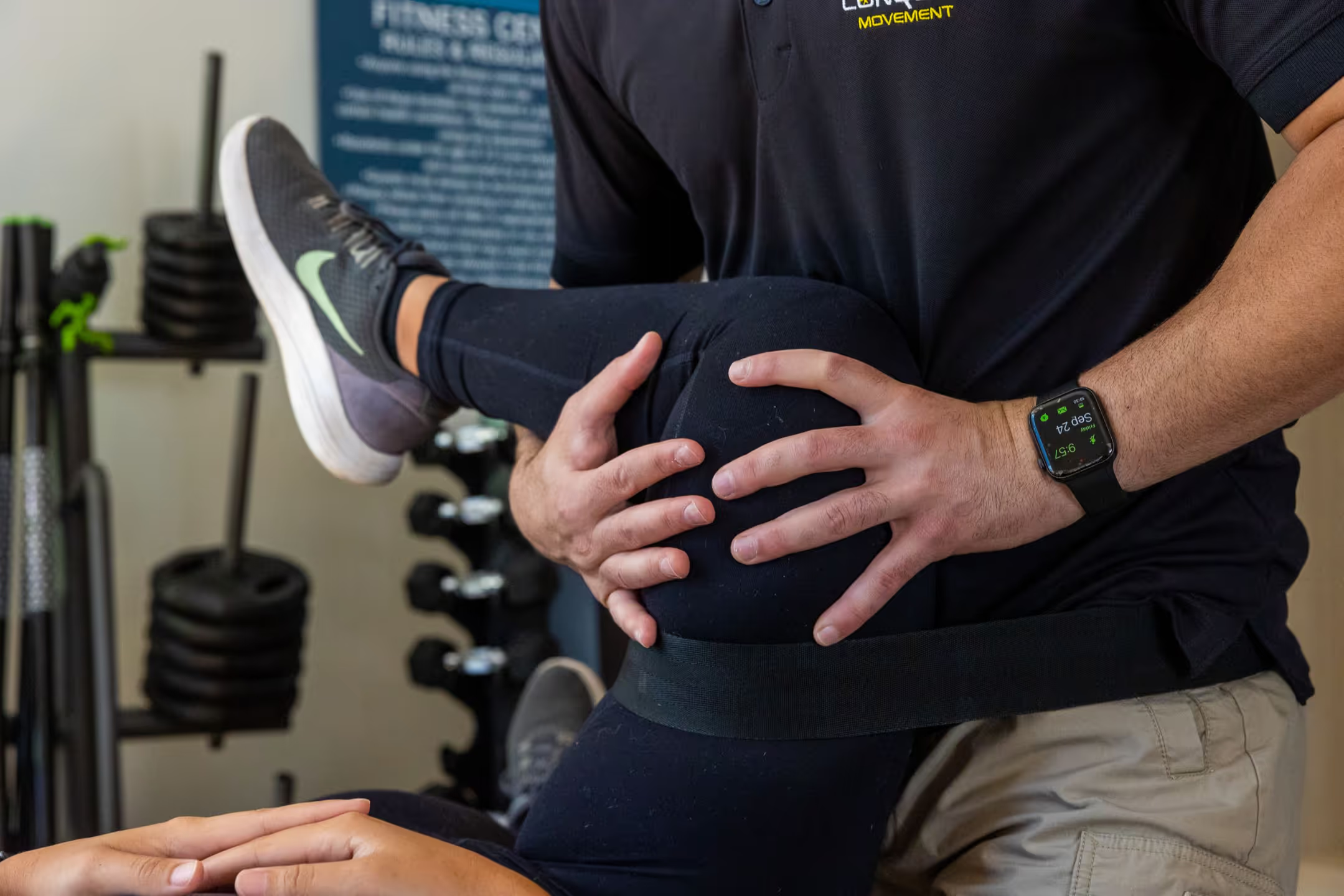
Physical Therapy is changing, and here at Conquer Movement, we're leading the charge.
When you think about traditional Physical Therapy most active adults in Wilmington think it's either way too low level for them, or they don't need it.
This leads them to go for a run on their own, take the newest fitness class, or get through a strength workout with a templated routine they picked up from the internet. All of these are fine options, but do you ever find yourself getting injured? The last thing you want to do is have to give up your active lifestyle and what you love to do.
This is where Physical Therapy and Strength training blend come into play.
Here at Conquer Movement, we're creating a new service in which Physical Therapy and 'personal training' are combined. Think about a world in which you have someone who is an expert in the body (a PT goes to school for 6+ years!!) overlooking your whole health, wellness, and fitness routine. Not only can they get you out of pain when you're injured, but they can watch you work out and ensure that you're moving and loading properly during a workout.
Whether you have a current injury or are just looking to take your current exercise routine to the next level a Physical Therapist overseeing your workout routine is one of the best options you can ask for. As PTs enter the fitness space, they're the most qualified option for all your injury prevention needs, strength goals, and best option to get you moving and feeling your best.

Why a Physical Therapist for training?
Point blank -- there isn't any more qualified to take you through a workout than a Physical Therapist. Don't get me wrong, there are tons of great personal trainers out there, but a Physical Therapist has gone through years of specific schooling on the human body, how it moves, how to rehab injured joints and muscles, and what it takes to get you stronger. This is clearly much more than your run-of-the-mill fitness professional who may be inspiring but only has an online course under their belt.
The ability for a Physical Therapist to take you through the most in-depth evaluation possible to determine what exercise your body should be doing is something that cannot be overlooked. Most generic fitness evaluation tools are fine, but still don't give you the exact answers on how you should move, train, and work out. The system used by Physical Therapists here at Ripple takes you through a joint by joint evaluation and gives us a clear picture of what joints are tight, where you need to work on strength, and what areas of motion need to be more flexible.
This evaluation knowledge also translates into training. Having the specific knowledge and experience of being able to look at someone's form and understand how certain movements might be off and could lead to injury is HUGE! in a workout. Having a PT with a trained eye to overlook your squat pattern, deadlift technique, and how you hold a kettlebell is ideal to ensure you're not getting injured while still getting a good workout in.
What does A Physical Therapy x Strength Session Look like?
How are you feeling today?
That's how every session starts. From there, we determine if we need to get you on the table to do some Physical Therapy treatment to get you out of pain. Or -- if you're feeling good, it's right into the gym. Time to sweat.
If you're someone that has a current injury, or a pain point that's limiting doing what you love then generally we'll want to work through our three-step process and get you out of pain, fix the root cause of your pain, and then get you stronger than before. This means sessions will start with less of a 'workout' and more on-table work including manual therapy, dry needling, and mobility exercise. Then, once your pain levels resolve, it's off to the gym to get stronger!
On the other side of the coin, you're an active adult and maybe have some tight joints but overall are pain-free. If this is the case, then it's time to rock!! As always, we start with the evaluation to determine what exercises we should stay away from, where we need to build mobility , and what areas need to get stronger. We'll also go over a full-fledge goals interview. With all this information, we're able to write up a workout program that is safe, effective, and will help you hit your wellness goals.
All sessions are 1 on 1 and 60 minutes with your Physical Therapist. The rapport you build is invaluable and is one of the big reasons why this is so successful. Instead of bouncing around from different PT, trainer, or class instructor you have someone that's by your side 24/7 and knows you as an individual. This helps problem solve any nags that may arise from tight muscles, or just pushing it too hard.
View this post on Instagram
A post shared by Rehab For Athletes And Lifters 🏃♀️🥋🏋️♂️ (@conquermovementpt)
What's the difference between this and Personal Training?
The biggest difference between a Personal Trainer and a Physical Therapist is their scope of practice. Here in North Carolina, a Personal Trainer isn't allowed to evaluate or physically put their hands on their clients. This ability is what sets a Physical Therapist apart. Our strength clients will come in and sometimes will be a little tight, or need something to warm them up a little quicker -- this is where our hands come into play! A little manual therapy work to a tight hip or cranky shoulder can be the difference between a productive workout or one that leaves you feeling worse than when you came in.
A Physical Therapist's ability to blend injury prevention and strength training is also a key factor in why our service is different. Taking information from the evaluation, and knowing the specific mobility drills and exercises to work on that during a strength program is massive!
For example, if in the evaluation it's determined that a client has a tight right hip in internal rotation, a set could look like this;
Exercise #1 Corrective - Hip Internal rotation activation with band
Exercise #2 Upper Body - 2 Arm DB Press
Exercise #3 Lower Body - Single Leg Squat to bench
Exercise #4 Core - Anti Rotation Press
Adding in that 1st exercise can be the difference between a pinchy hip or leaving the workout feeling like you got a totally new hip! It will also set the lower body exercise up for success and ensure that you have the proper muscles turned on and ready to go before you get into the workout.
Physical Therapy and strength training should be the ideal additive to your active lifestyle. If you're someone that loves to run, having a Physical Therapist see you once or twice a week for a workout is essential to make sure you can keep running forever. Really, that's what we're trying to do here.
Strength training with a Physical Therapist is the best way to get stronger, get and stay out of pain, and do what you love forever.
Even in the traditional sense, a Physical Therapist's job is to take someone whos injured or weak and get them stronger. This is exactly what everyone is looking for in their strength program and overall fitness routine.
Our clients come in for "Physical Therapy" two or three times a week. They come to reduce their injuries, work out, and get stronger but stick around for the bond they create with their PT. Don't believe us? Listen to what our clients have to say!
It all starts with the evaluation. Without it, you're just guessing what your fitness routine should look like and what mobility exercises you need to be doing.
If you're ready to get started, book a FREE 15-minute phone call with me. We can chat more about where you're at now in your fitness routine, what your goals are, and what you need to do in order to get there. Or -- if all of the above intrigued you, and you want more information on Personal Training and Physical Therapy we can chat through it. Looking forward to hearing from you!
